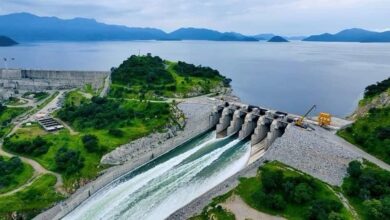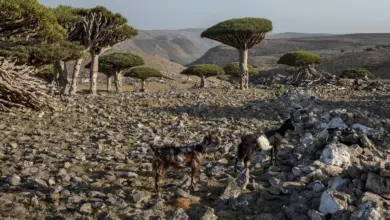Herodotus famously wrote 2500 years ago that "Egypt is the gift of the Nile." But 50 years after the construction of the Aswan High Dam, it is now Lake Nasser that is the country’s most important body of water. All water stops at the lake before it travels through the Nile to the Mediterranean. This is why protecting Lake Nasser from pollution is a simple but important task to safeguard the nation’s water supply.
"Lake Nasser should be protected and isolated," said Ahmed Farouq, a project manager for the NYC-based Near East Foundation, which has development projects around the lake. In the last few years a number of luxury hotels and cruise ships have popped up on the lake, threatening the environmental integrity of the water and prompting concern from environmentalists.
"Ferries are putting all kinds of human waste into the lake and these ferries are polluting the lake," said Diaa el-Quosy, a retired adviser to the Ministry of Irrigation and Water Resources. "It’s a shame. That’s all you can say."
In addition to the threat of tourism, population increase and a growing agriculture industry around the lake could have severe consequences for the national water supply. According to Farouq, the government of Egypt decided that by 2017 about one million people will be settled around Lake Nasser.
"Some people think they are powerful," said el-Quosy, who was the chairman of the National Water Research Center. "They have the money. They call them investors. And this is a disaster. These people do not know what the consequences are. All they are interested in is to have a piece of land at a very cheap price and after development they sell it and they get millions."
The concern for environmentalists is that the majority of these people will be resettled from farming communities around the country that commonly use pesticides, herbicides, and chemical fertilizers. Any land higher than 182 meters above sea level will drain into the lake, which means that the farmers’ chemicals will go straight into the national water supply.
"If [new farmers] do the same in Lake Nasser that they are doing on old lands, it will be a disaster," Farouq said.
Before the High Dam was in place, the Nile carried 134 million tons of nutrient-rich silt from upstream. Silt is full of minerals originating in the Ethiopian volcanoes that made soil around the Nile extremely productive for thousands of years. Once the dam was built, however, only three percent, or four million tons of silt, would flow in the Egyptian Nile.
Starting in the 1950s, the government increased the amount of chemical fertilizers given to farmers. By 1966 the amount of domestic production of nitrate fertilizers increased ten-fold.
Although chemicals are used by farmers around the world, the practice remains controversial. Environmentalists and health advocates have linked chemicals to diseases like cancer and Parkinson’s, but thus far have not made a strong enough connection to outlaw the practice or punish polluters.
In 2002, researchers estimated that 13,000 tons of lime-nitrate fertilizer were used annually to compensate for the loss of silt in Egypt.
Despite government assurances, the lack of silt downstream is believed to have damaged the Mediterranean coastline, and hurt the fishing industry as well. The plants on the river’s banks are depleted without nutrients from the Nile. The coast lost its natural barrier and began eroding. Fish also lost a source of food, and the fishing industry suffered. Total catches, particularly of sardines, dropped dramatically during and after construction of the dam. Fishing recovered to pre-dam levels by the early 1990s, although it was unclear if it was a result of replenished fish stocks or increased fishing.
The creation of Lake Nasser also produced a large fishing industry. This created another environmental challenge. The Nile Perch and Nile Tilapia were introduced to the lake and affected the food chain of the area.
The perch is a "super-predator" of other fish, which raised concerns that it would kill off the other species in the lake. This was one of the issues addressed in the documentary film Darwin’s Nightmare, which focused on the fishing industry and local communities around Lake Victoria.
The tilapia, which eats vegetation, usually is able to coexist with the perch because it feeds on the shoreline, while perch mainly stay deeper in the water. But tilapia is susceptible to toxicity from heavy metals. A study in 2001 found high levels of metals in some parts of the bodies of tilapia samples, though edible parts were in the safe range for human consumption.
Although there are many environmental concerns resulting from the construction of the high dam, many argue that the substantial increase in arable lands and creation of fishing in Lake Nasser outweigh the risks. No longer subject to the naturally occurring floods, the country effectively cultivates agriculture year round and controls the power of water. So far the lake has not been polluted to the extent that the downstream Nile has, but the growth of farming and tourism in and around Lake Nasser have raised concerns for the future.
"The area is clean, the water is clean," Farouq said. "There’s only a few farmers. Their practice in under control. There’s no problem with the environment. We’re trying to protect for the future."




